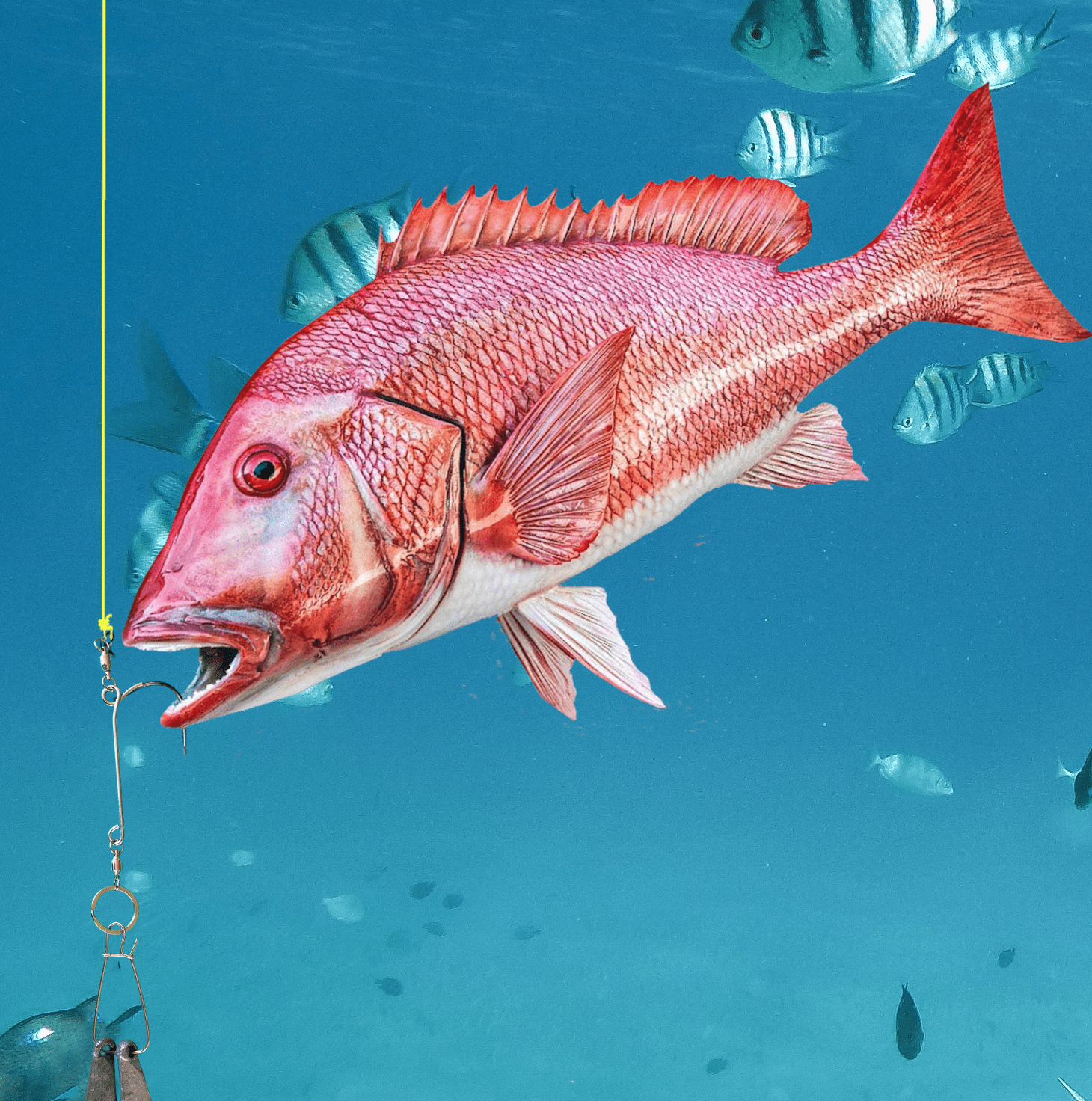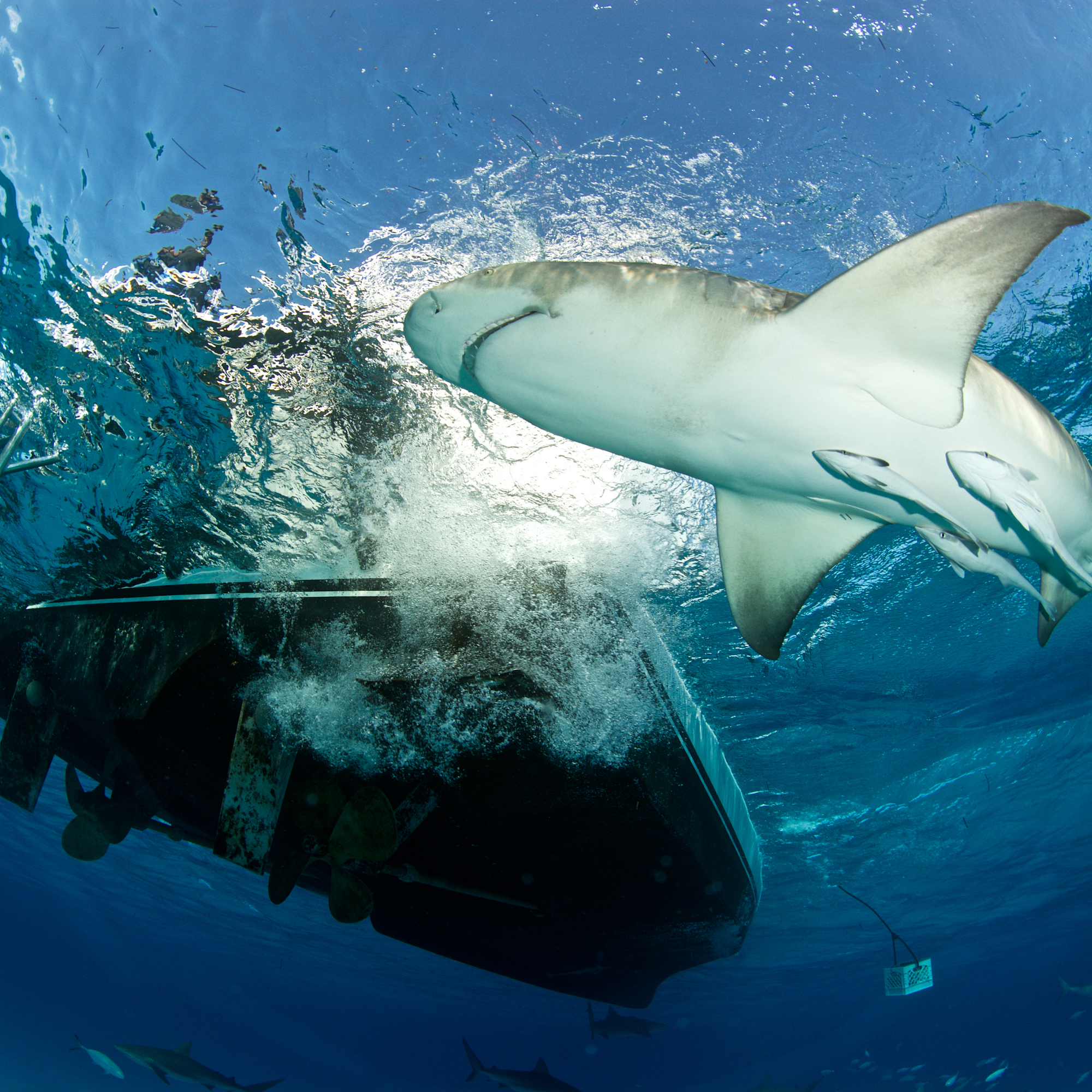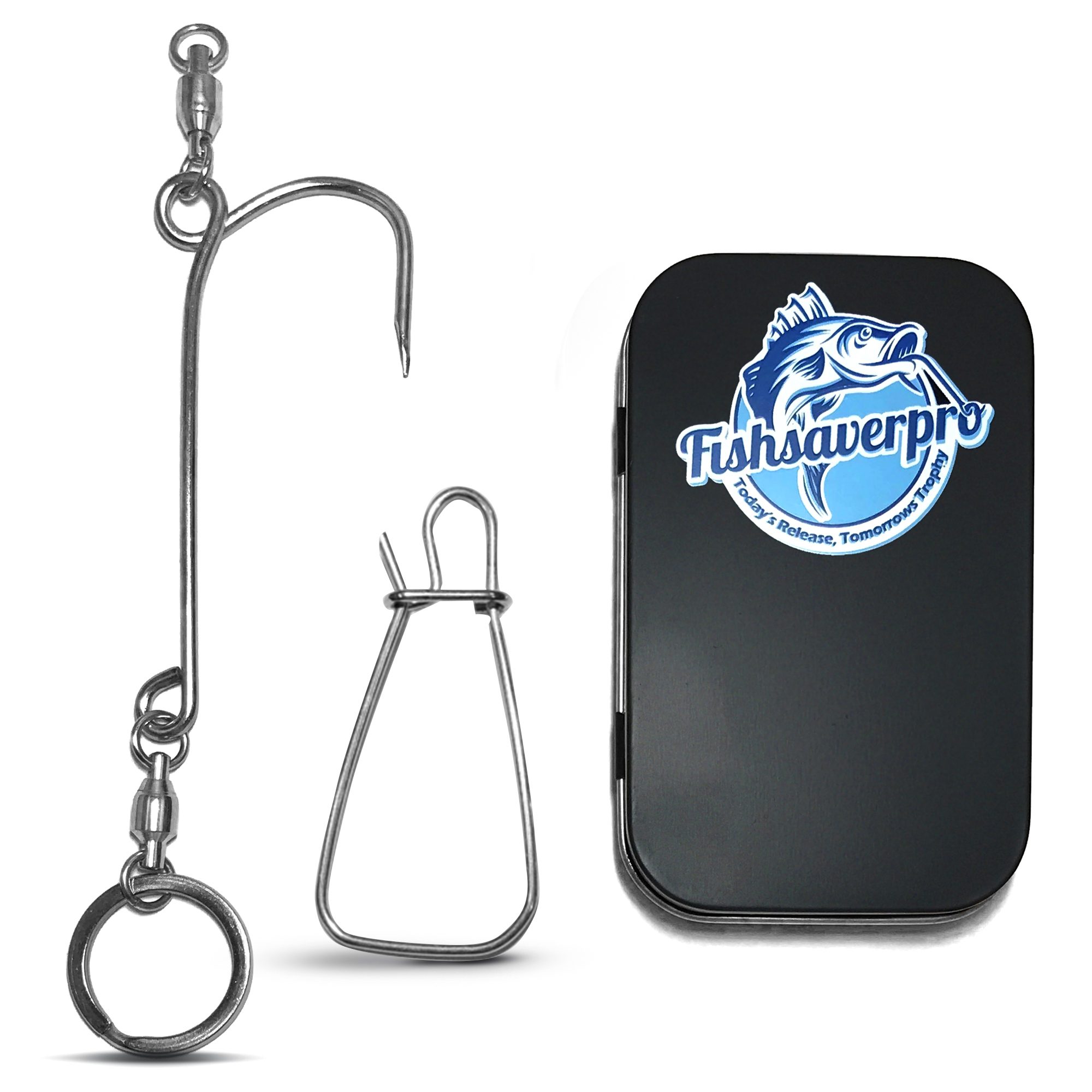Fishsaverpro
Fish Descending Device
Fishsaverpro is a patented descending device for fish that need to be returned after being caught in deep water and are suffering from decompression or Barotrauma.
visit Shop







Why The Fishsaver Project?
A critical factor for the sustainability of recreational fishing and boating?

Preservation Of Fish Stocks
- Due to information sharing on the internet and improved sounder technology fishermen have become better hunters and catch numbers have increased tremendously.
- Due to bycatch, keep, and size restrictions an estimated 70% of fish caught are returned.
- Due to barotrauma in fish caught from depth, most will die near the surface and will be taken by predators including sharks.
- Fishsaverpro returns fish to depth quickly and scientists’ data show that release at depth can have up to an 85% survival rate.
- Most fish released at depth will stay in that area and remain part of that fish resource.
- Venting, although better than nothing, has been found to be high risk for the fish and many fish will die later due to internal damage
- A Tag and Release philosophy needs to replace the Catch and Kill philosophy. This is the strongest science-driven weapon we have to counter green pressure to reduce recreational fishing. freedom.
The Green Threat
- A large portion of the green movement sees fishing as a barbaric and cruel attack on creatures of the sea that needs to be stopped.
- The greens are pushing to stop recreational fishing and increase no-fish zones as they claim fish stocks are being depleted and won’t be able to recover.
- It is every rec fisherman’s responsibility to follow a balanced scientific approach to the harvesting of fish. This is essential to counter growing radical pressure to discredit fishing as a sport and to stop the amount of Green Zones closed to boaters and fishermen.
- Having a sustainable tag and release program whilst working with fisheries on obtaining data from by-catch is an extremely strong weapon to counter anti-fishing hysteria.
- Being able to return fish to depth quickly with a high recovery rate shows a strong commitment to monitoring and maintaining fish stocks.


Men In Grey – The Tax Collector
- Sharks have many names including the tax collector. They are extremely smart and opportunistic feeders and become dangerous once they become complacent around boats as feed opportunities.
- Increasing numbers of pro fishermen have reported that sharks approach and follow boats once they hear the motors.
- Where sharks are around a boat many fishermen don’t bother to fish as they know anything caught will be mutilated
- Sharks feed by attacking fish being reeled in and bycatch that has been thrown back.
- Fish that are unable to return to depth are a major problem as they will often flounder near the surface or die near the boat attracting predators.
- The reasons for the shark problem are debatable, however, the seriousness of the shark issue is blatant.
- Swimmers being attacked around boats and small watercraft being followed and harassed by sharks has become commonplace.
Why Choose Us
Why Choose Us
Fishsaverpro is an engineered descending device for fish that need to be returned after being caught in deep water and are suffering from decompression or Barotrauma.

Safety
The wide clip allows the angler to remove and change weights quickly and as required. This combined with the dual swivels makes handling the product safe and easy.

User And Fish-friendly
The rig and hooks are easily placed through the lip of the fish with a reduced risk in terms of damage to the fish or handler. Big clip saves having to struggle with too much or not enough weight for the fish

Quality
Marine-grade excellence: Materials used to last for a lifetime. Uncompromising quality in every product.

Engineered Design
Fishsaverpro
is designed to optimize the load and minimize stress and damage to the fish.
*Does Not Include Weights

Shop Now
Visit Amazon
Why use NOAA Information?
NOAA Has the most comprehensive data studies in the world on deep-release techniques and trauma recovery with survival statistics.
This Data has been built over 20 years and covers both the east and west coasts of the USA. Their data is conclusive and has resulted in it being now mandatory on both the East & West Coasts of the USA for off shore deep drop Rec fishers to carry a release device.
Depending on species and ocean temperatures NOAA is reporting 80% – 85 % full recovery with descending devices against less than 20% for fish released on the surface. Repeat recaptures are common. For us to maintain the standard of fishing we have now and avoid further restrictions going into the future it is essential we follow their lead.
reviews on amazon
What Our Customers Say
Thank You Note: A note of appreciation to the many members of NOAA, Return em Right and Sea Grant for their support and contribution of ideas, research data, and images used for the development of Fishsaverpro and used on this website. A special mention of thanks to Brian Fleusch of Sea Grant and Nick Haddad from Return em Right for many of the images and posts..
The contribution of NOAA and Sea Grant research in helping to reduce loss through Barotrauma and maintain and grow fish stocks so that we can have a sustainable recreational fishery in the future should not be underestimated.
Join over 18,000+ Fishermen Who Trust FishSaverPro for Safe Releases!
With over 500 glowing reviews and an impressive 4.5-star rating on Amazon, FishSaverPro is the go-to solution for fishermen committed to protecting fish populations. Our high quality marine grade easy-to-use descending device makes releasing fish back to the depths safer and simpler than ever.
Ready to see why so many fishermen rave about FishSaverPro?
Love how easy it is to change the weights depending on what I’m fishing for. The quick clip design makes it fast to adjust. This lets me use it on both light snapper and heavier reef fish without any problem. Very happy with the purchase.
Brian HVerified Purchase
Great little device. Bonus points for the product with hero tin packaging — comes in a nice little hero tin that makes it easy to store or even gift to friends. Simple, effective, very well thought out product.
Trevor KVerified Purchase
Exactly what was expected.

Leonard s.Verified Amazon Purchase
I fish in a lot of different conditions and love that this doesn’t rely on any kind of release mechanism that can jam or fail. Once you get the fish down, pull it up and it releases like it’s supposed to every time. Couldn’t be happier with how reliable this tool is.

Kirby J. Renfro Verified Amazon Purchase
Used this release device for the first time last week. We were reef fishing about 40 miles offshore in the
gulf at about 75 to 100 feet. We used the device on about 20 red snappers that were undersized and
not one floated back up. We later fished in 200 feet plus and released several red snapper and several
grouper, again not one resurfaced. In the past, we had used a deflater and about half of all released
fish never made it back down, either sharks or just too damaged to survive. This is a great product and
will order a couple more as backups.

Amazone CustomerVerified Amazon Purchase
It is required to have it on the boat when fishing. It looks to be good quality. Easy to use. Hope to get
pictures soon.

James ThompsonVerified Purchase
Thanks, Andy, I had used this on a friend’s boat and we did rescue a lot of undersized rockfish. I am
impressed that there is a product that will help them recover after being ripped up from the bottom of
the ocean. I am all about sustaining the ecosystem and this product will work wonders, I just wish
everyone would use them. Sure, it takes time away from fishing a spot but in the long run, we all win.
Good fishing and good eating to you sir.

Verified PurchaseAmazone Customer
Super compact and very light. Fits easily in my small tackle box and doesn’t take up any real space. Love that I don’t need to fiddle with moving parts or resets. Just clip, drop and done. Works great on small snapper and larger rock fish too.
TommyyamahaVerified Purchase
There are quite a few fish descending devices available but his one is the simplest and best.
My rig is set up as a dropper rig and I can easily attach the device on the loop with a snap swivel to my
regular fishing rod. Forget the fish venting tool, I can highly recommend this device.

Q.L.SVerified Purchase
You can make your own descending device with leaders and hooks but this is a
real timesaver

N.PedersonVerified Purchase
Works well and is way cheaper than the auto devices. Save money by getting this over
the automatic devices. This won’t break and will last years.

TommyyamahaVerified Purchase
This device allows for the quick fish return to the water and has always released the fish
at the required depth. Worth every penny. I will be getting more for my other boats!

kirby j. renfroVerified Purchase
This is well-made and easy to use. Yes, it may be a bit pricy for what it is but it is simple, well made, and
effective I would recommend it for those who fish at a depth greater than 60′ as a way of releasing the
bottom dwellers safely and with a high recovery rate. A lot better on the fish than “fuzzing” which is
becoming illegal in many areas because of the harm it does to fish

DarrelVerified Purchase
Quality you can count on. Love this for the boat being a responsible fisherman
and sending back fish to live

WilliamVerified Purchase
I don’t have any video buttons product worked very well sending fish back
down to the area we were fishing. All fish came off on their own. Great product.

Brian M.Verified Purchase
Overall this descending device is well-made and designed. Haven’t used it yet but it certainly looks a lot
easier to use than what I have now. The one thing I would change is to replace the weight ring with a
large trolling snap swivel. This would make the adding/changing of weights much easier and faster than
dealing with the ring. Of course, it’s easy enough to just add that swivel to the ring. Just a thought.

Brian AngersVerified Purchase
Just received the product. It is well built with quality material. Looking forward
to being able to use it on my future fishing trips

DavidVerified Purchase
I always feel weird being asked to leave a review a few weeks after receiving a product as so much
about my feelings on a product depends on how long it lasts. That said, on my very first fishing trip with
this device I had to descend two fish, and having this on hand undoubtedly saved their lives and my
conscious.
The descender is easy to use and well-built. It appears it will stand the test of time and even if it only
lasts a year or two, the value is clearly there.

rockandride6Verified AmazonPurchase
Honestly I wasn’t sure how hard this would be to use but it’s so easy. I showed my kids how to rig it up, and even they could release fish safely with it on our first trip. Love seeing the fish swim back down healthy. Every angler should have one of these.
JessicaMVerified Customer
Brilliantly simple and effective device. I used it on a few red snapper and grouper caught deep and it worked flawlessly every time. The fish descended quickly and swam away strong when released. Super happy to have something so simple that helps me release fish properly.
Michael BVerified PurchaseCEO
Very well made. Solid stainless steel, no plastic parts or complicated mechanisms to fail. This feels like it will last me many years. Simple design but does exactly what it’s supposed to do. Much better than the old venting tools I used to rely on. Highly recommend.
Sam R. Verified Purchase
I fish saltwater almost every weekend. After 6 months of use this still looks like new. No rust, no corrosion. The stainless steel is excellent quality. Glad I didn’t cheap out on some plastic gadget.
AngelaP Verified Purchase
FAQ
Common Barotrauma questions and answers
Q1 What is barotrauma in fish?
A;Barotrauma occurs when fish are rapidly brought up from deep water. The sudden pressure drop causes gases in the swim bladder and in body fluids to expand. In addition to swim bladder inflation, microscopic gas bubbles form in the blood and tissues, leading to internal injuries, bulging eyes, stomach protrusion, and loss of swimming ability.
The belief that the airbladder is the only organ affected is very wrong as the fish is struggling with gas expansion like bends in a diver.
Q2: Why is barotrauma dangerous for released fish?
A: Fish suffering barotrauma often cannot return to depth on their own. They float at the surface, exhausted, disoriented, and highly exposed to predators such as sharks, dolphins, or seabirds. Many will die from exposure or predation if not actively assisted.
Q3: What species are most affected?
Any fish being brought up from depth can show barotrauma .Bottom and reef-dwelling species such as snapper, grouper, cod, rockfish, and many others are highly vulnerable, as they often inhabit deeper waters where pressure differences are extreme.
What are the best bait and lures for fishing?
Bait and lures vary by species. Common baits include worms, minnows, and crickets for freshwater fishing. In saltwater, live bait like shrimp or cut bait can be effective. Lures range from spinners to crankbaits and jigs. It’s a good idea to research what works best for the specific fish you’re targeting.
Q4: What happens if you simply vent a fish?
A: Venting punctures the swim bladder to release some gas but does not address gases trapped in blood and tissues, nor does it help with the severe fatigue and internal trauma many fish experience. Even after venting, fish may struggle to control their buoyancy, often hovering in mid-water where predation risk remains very high.
Q5: How does a descending device like FishSaverPro help?
Descending devices return the fish safely to its original depth, where pressure recompresses gases, and the body can naturally reabsorb bubbles. The fish recovers faster, regains buoyancy control, and returns to its habitat in much better condition.
Q6: Is there scientific evidence supporting descending devices?
Yes. In one large study involving 2,000 filmed fish descents even into areas with active predator presence, the observed post-release predation rate was less than 1%. In contrast, vented fish released at the surface had extremely high predation and often attracted predators rapidly, becoming easy prey and sometimes disrupting entire fishing areas by drawing sharks to the boats
Q7: Why is descending better than venting?
A: Descending avoids physical damage, greatly reduces predation risk, and allows the fish to recover under natural pressure. Venting compromises the fish’s ability to regulate buoyancy for days, making it vulnerable to predators and along with high risk of damage and infection venting is lowering its chances of survival.
Toggle Content
Q8: Are descending devices easy to use and how much weight do I need to descend a fish?
A: Yes. FishSaverPro requires no moving parts or complicated setup. Simply attach it to the fish’s jaw, lower it to depth, and retrieve. The fish releases automatically. This fast process reduces handling stress and increases survival odds.
The thumb rule is that you need to add 20% of the fishes weight in descending weight. Our quick release clip means change the weights to suit size and you don’t have to wind up massive weights.
Q9: Are descending devices required by law?
A: In many regions, including the East and West coast of the USA and Western Australia, fisheries management authorities now mandate descending devices are carried when offshore and for certain species or depths to help reduce release mortality.
Q10: Can FishSaverPro handle different sizes of fish?
A: Yes. One of the best design features of FishSaverPro is its strong and robust yet compact design along with interchangeable weight system which allows you to quickly adapt for different species and sizes, ensuring a safe descent every time — from small bycatch to large reef fish.
